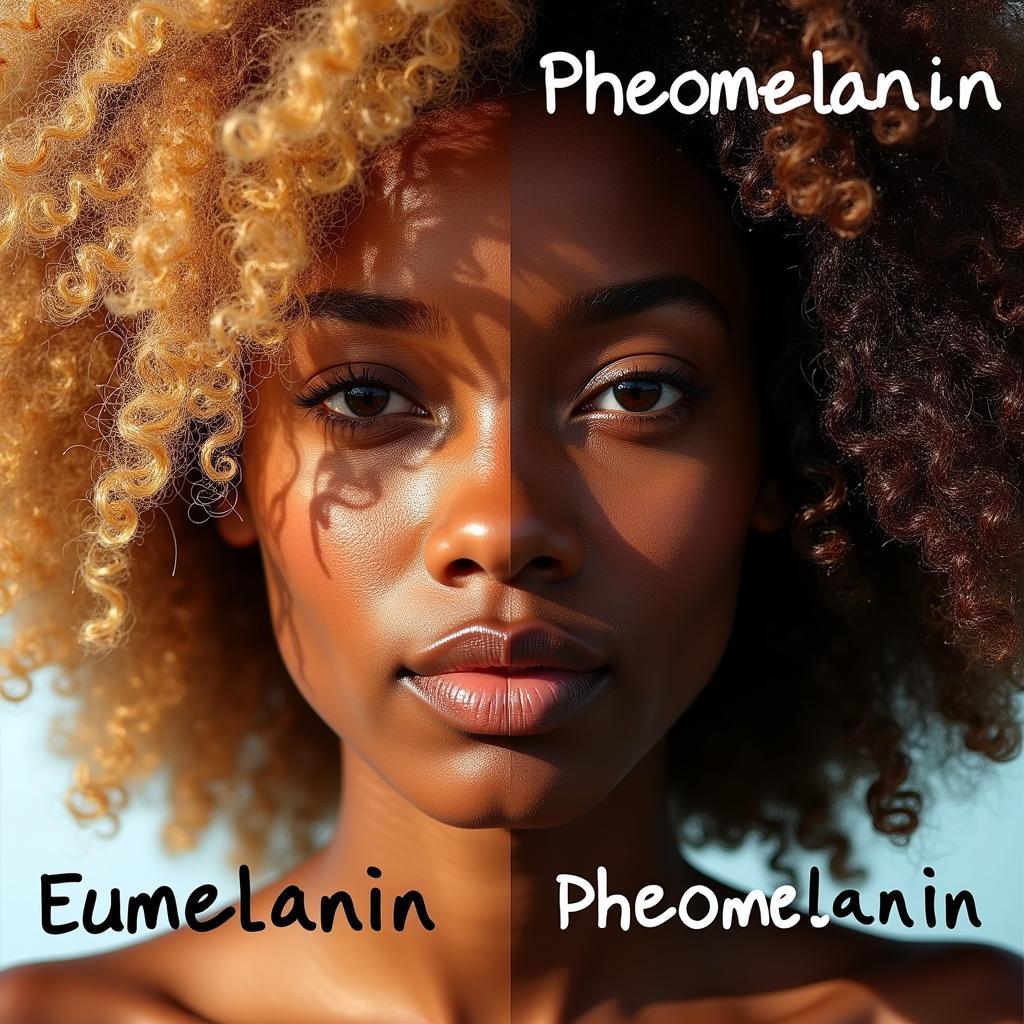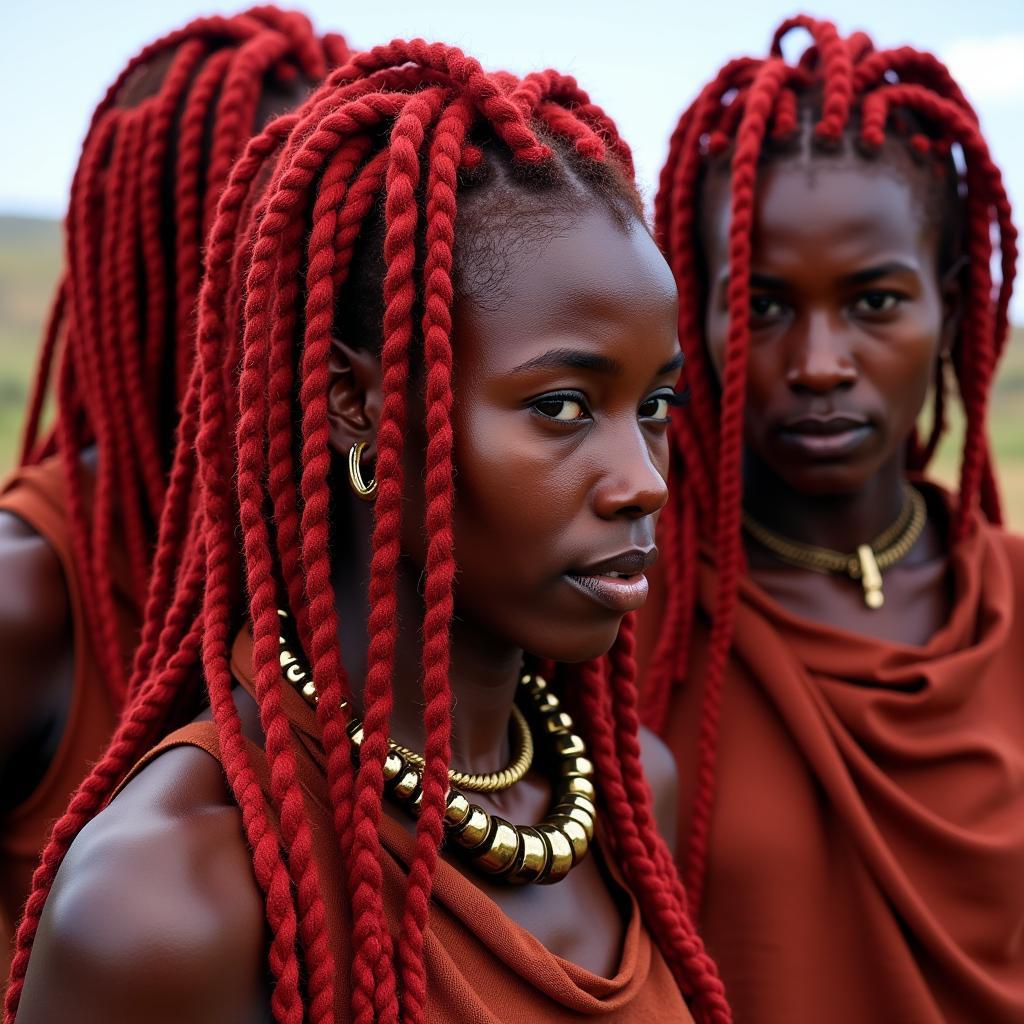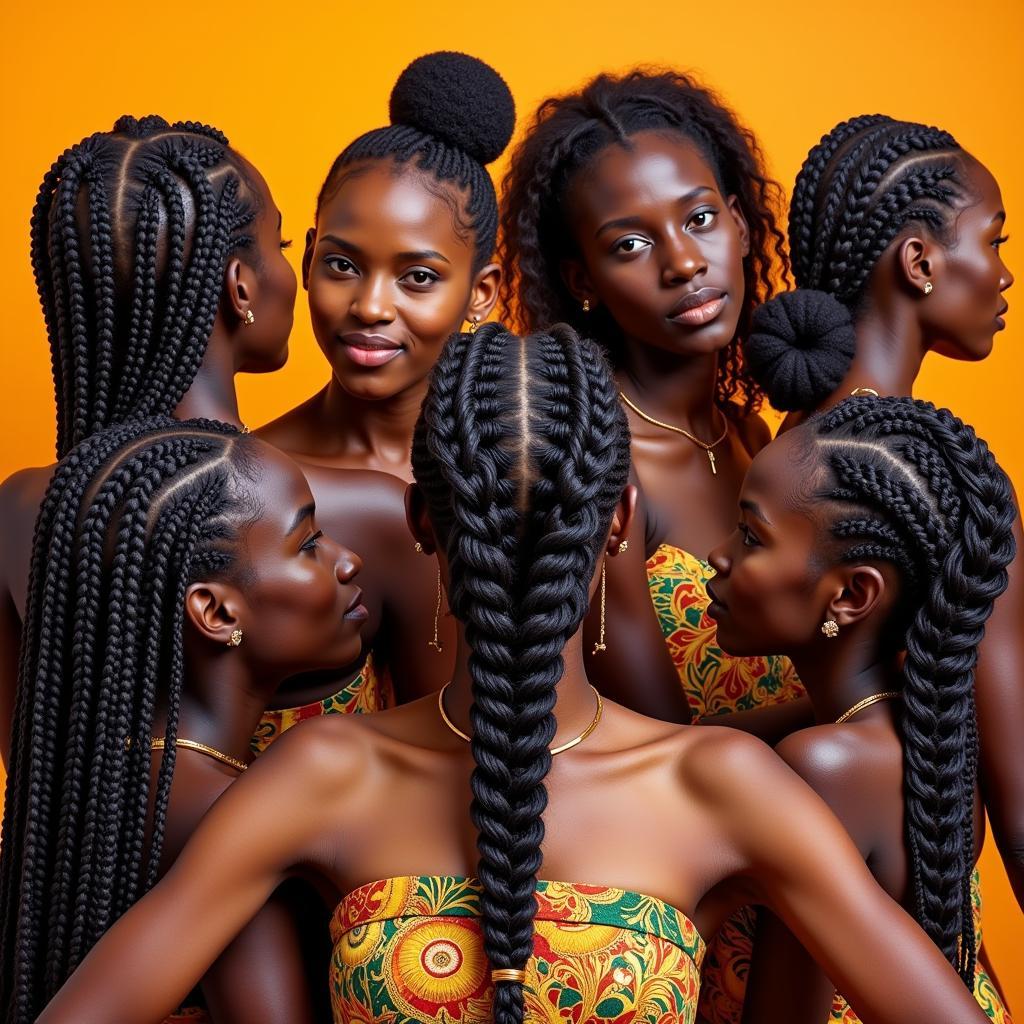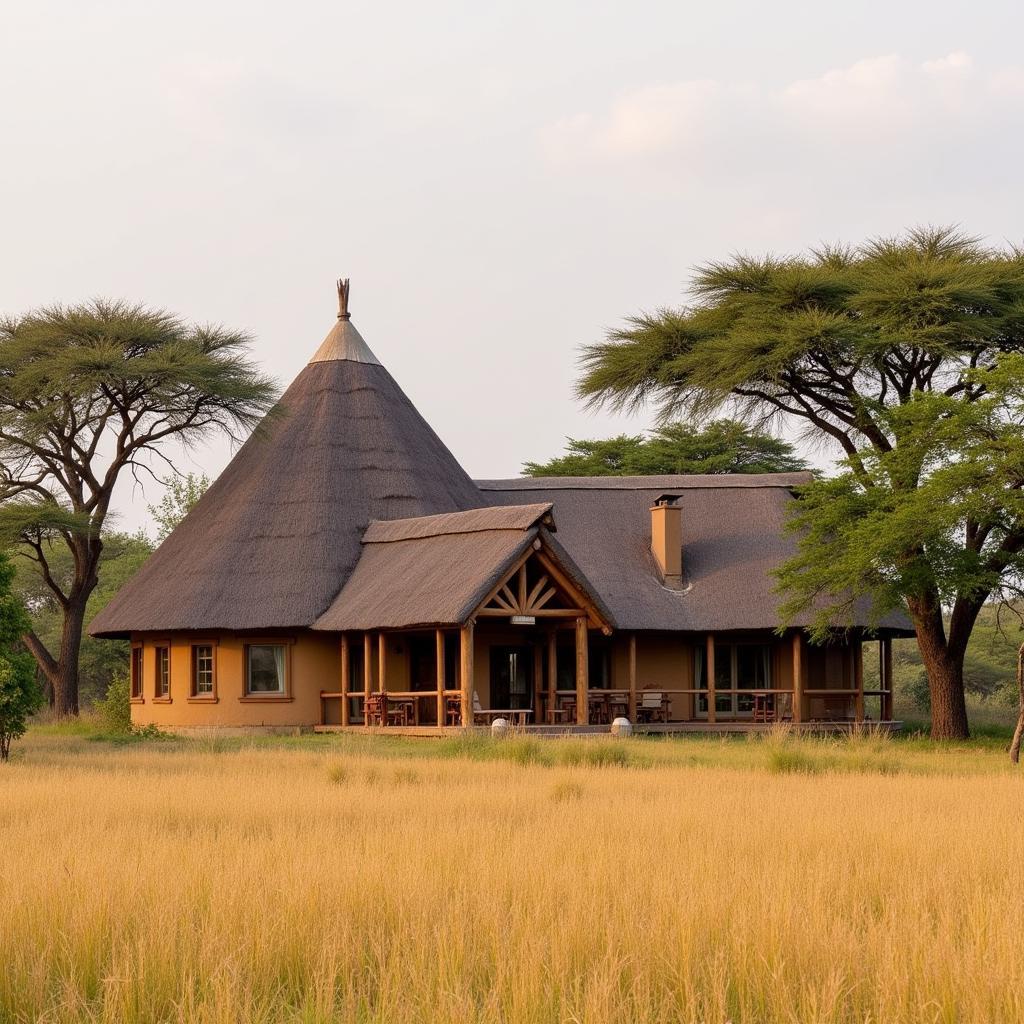African Hair Colours: A Celebration of Diversity and Beauty
African Hair Colours are as diverse as the continent itself, encompassing a breathtaking spectrum of hues and shades that go far beyond typical classifications. From the deepest black to warm browns, rich reds, and even hints of blonde, African hair is a tapestry of genetic heritage, cultural influences, and personal expression.
Unravelling the Genetics of African Hair Colours
The rich tapestry of African hair colours is a testament to the continent’s genetic diversity. While eumelanin is responsible for black and brown hair, pheomelanin contributes to red and blonde hues. The interplay of these pigments, along with variations in hair follicle shape and distribution, creates the incredible range of colours seen in African hair.
 African Hair Genetics: Melanin Pigmentation
African Hair Genetics: Melanin Pigmentation
Beyond Black and Brown: Exploring the Spectrum
While black is the most prevalent hair colour in Africa, it’s not a monolithic entity. Within this category lies a vast spectrum, from jet black to shades infused with blue or purple undertones. Brown hair, too, encompasses a wide array, ranging from deep chocolate to warm chestnut and lighter shades like caramel.
Red Hair: A Rare and Striking Hue
Red hair, though less common, holds a distinct presence in certain regions of Africa. This vibrant hue is particularly notable among the Himba people of Namibia, where a mixture of ochre and butter is used to create their iconic red dreadlocks.
 Himba Women with Red Dreadlocks in Namibia
Himba Women with Red Dreadlocks in Namibia
Blonde Hair: A Legacy of Ancient Connections
Blonde hair, while often associated with European ancestry, can also be found naturally among some indigenous African populations. This intriguing phenomenon points to ancient genetic connections and the complex migratory patterns that have shaped human history.
Cultural Significance of Hair in Africa
Hair in Africa is much more than just an aesthetic feature; it’s deeply intertwined with cultural identity, social status, and spiritual beliefs. Intricate hairstyles, often adorned with beads, shells, or other embellishments, serve as visual markers of ethnicity, age, marital status, and even personal achievements.
Braids: A Timeless Tradition
Braiding, a ubiquitous practice across Africa, transcends its practical purpose of managing hair. It represents a rich artistic heritage, with countless styles passed down through generations. From simple cornrows to elaborate patterns and extensions, braids are a testament to African creativity and cultural pride.
Hair as a Form of Communication
In many African cultures, hairstyles are used as a subtle form of communication, conveying messages about a person’s social standing, availability for marriage, or even their mood. This intricate language of hair adds another layer of meaning and significance to African hair traditions.
 African Women with Braided Hairstyles: Cultural Significance
African Women with Braided Hairstyles: Cultural Significance
The Impact of Globalization and Modern Trends
In an increasingly globalized world, external influences have impacted traditional African hairstyles and hair care practices. The rise of relaxers and other chemical treatments, while offering convenience, has also sparked conversations about beauty standards and the preservation of cultural heritage.
Embracing Natural Hair: A Movement of Self-Love
In recent years, there’s been a powerful movement towards embracing natural hair textures and styles. This shift reflects a growing sense of pride in African identity and a rejection of Eurocentric beauty norms. From afros to locs and twist-outs, natural hair is celebrated for its versatility, beauty, and cultural significance.
Conclusion: Celebrating the Beauty of African Hair
African hair colours are a testament to the continent’s rich genetic and cultural tapestry. From the deepest black to warm browns, fiery reds, and even hints of blonde, each hue tells a story of heritage, tradition, and individual beauty. As we continue to celebrate the diversity of African hair, let us remember that true beauty lies in embracing our natural crowns and honoring the legacy they represent.
FAQs about African Hair Colours
1. What is the most common hair colour in Africa?
Black is the most prevalent hair colour in Africa, but it encompasses a wide spectrum of shades and undertones.
2. Why do some Africans have red or blonde hair?
Red and blonde hair in Africa can be attributed to variations in melanin production and genetic heritage, reflecting the continent’s complex history and diverse populations.
3. What is the cultural significance of hair in Africa?
Hair in Africa is deeply intertwined with cultural identity, social status, and spiritual beliefs, often serving as a visual marker of ethnicity, age, and personal achievements.
4. How has globalization impacted African hair traditions?
Globalization has introduced new hair care practices and trends, sparking conversations about beauty standards and the preservation of cultural heritage.
5. What is the natural hair movement?
The natural hair movement is a celebration of natural African hair textures and styles, reflecting a growing sense of pride in African identity and a rejection of Eurocentric beauty norms.
Need Help? Contact Us
For any questions or assistance, please reach out to us:
Phone: +255768904061
Email: kaka.mag@gmail.com
Address: Mbarali DC Mawindi, Kangaga, Tanzania
We have a 24/7 customer support team ready to assist you.
